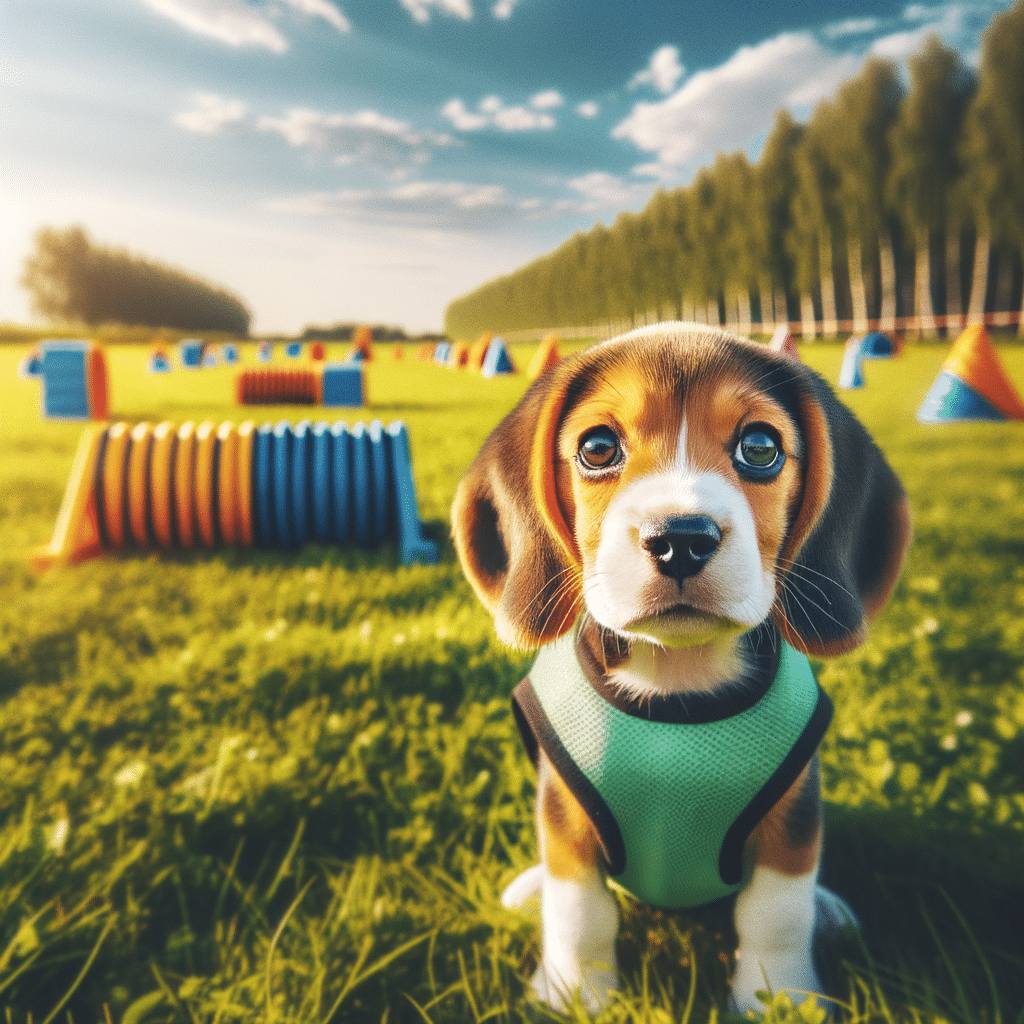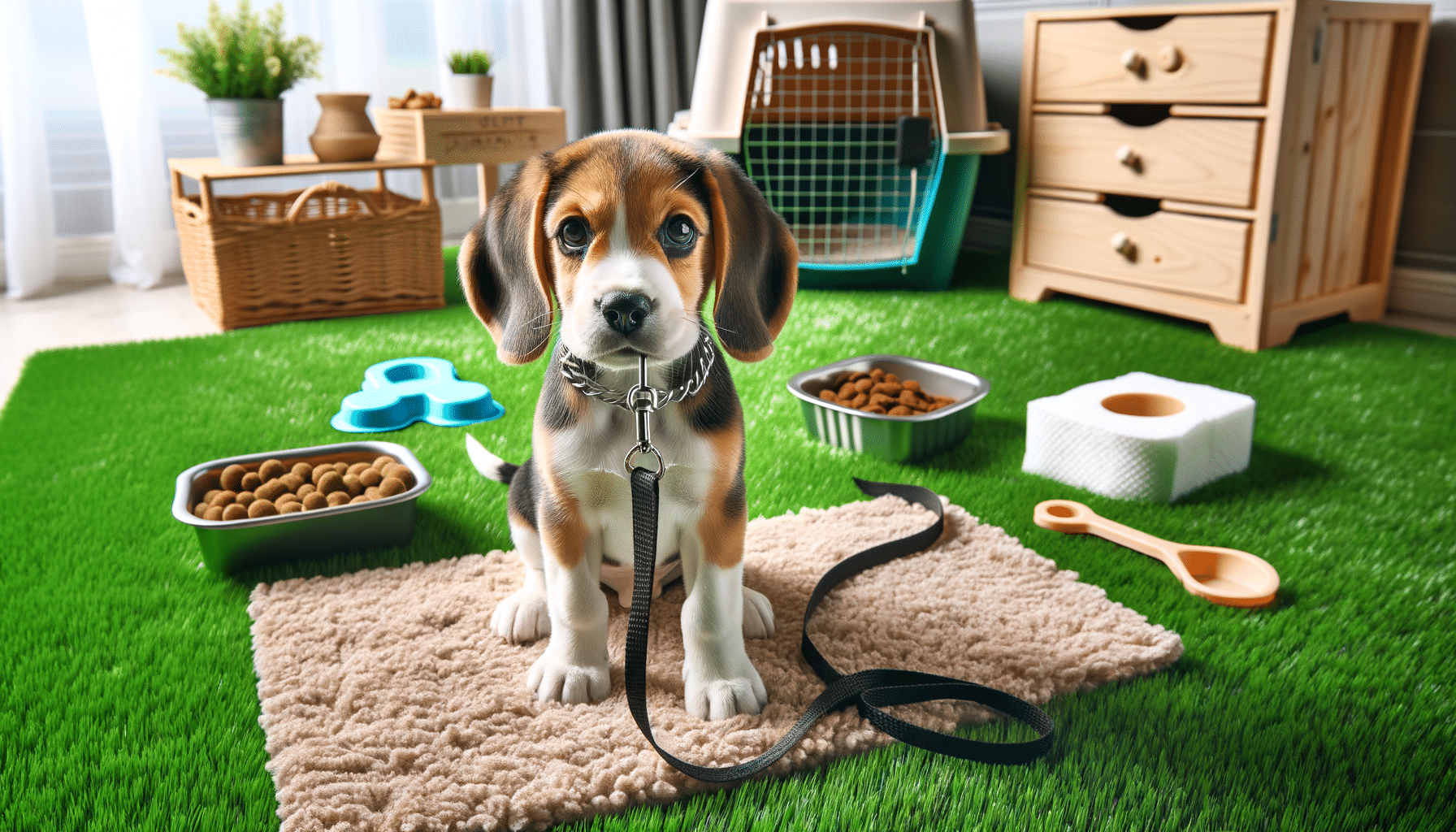Training a beagle is a rewarding experience that fosters a strong bond between the pet and the dog owner. However, it presents challenges due to the breed’s strong personality traits. Known for their high energy and independence, beagles require consistent and effective training techniques to become well-behaved family members. A clear understanding of beagle behavior is crucial in tailoring training methods that capture the attention of these intelligent dogs and encourage their willingness to learn.
In This Article
Beagles possess a deep-rooted instinct for following scents, sometimes leading to distractions during training sessions. Their sense of smell is a driving force in their behavior, often taking precedence over basic commands. While this trait makes them excellent as hunting dogs, it necessitates an approach that combines mental stimulation with patience in a domestic setting. Acknowledging the beagle’s need for adventure and nose work can be beneficial in designing training exercises that keep them engaged.
Highlights
- Consistent training techniques are crucial to overcoming a beagle's stubbornness.
- Understanding a beagle's instinctual behaviors is critical for effective training.
- Patience and mental stimulation play significant roles in the learning process of these intelligent dogs.
Understanding Beagle Behavior
Due to their intelligence, independence, and strong sense of smell, beagles display a unique set of behaviors and challenges regarding training. Effective training strategies must take into account their instincts and temperament.
Common Issues
- Stubbornness: Beagles may display a sense of independence, which can be misinterpreted as stubbornness during training sessions.
- Distractions: Their acute sense of smell can make them easily distracted by scents, derailing their focus during training.
- Behavioral Issues: If not properly trained, some beagles might develop behavioral issues such as excessive barking, digging, or separation anxiety.
Managing Challenges
- Consistency: Regular, short training sessions can help manage a beagle's short attention span and reduce stubborn behavior.
- Positive Reinforcement: Using treats and praises effectively rewards and encourages desired behavior, making training a positive experience for the beagle.
Prevention Strategies
- Early Socialization: Exposing beagles to various environments and situations from a young age can prevent fear and aggression.
- Mental Stimulation: Giving them tasks that stimulate their mind can help manage their energy and reduce the likelihood of destructive behavior.
By understanding and addressing these aspects of beagle behavior, training can become enjoyable and successful for both the pet and the dog owner.
Effective Beagle Training
Successful beagle training hinges upon consistency, positive reinforcement, and understanding breed-specific behavior. Employing the proper techniques can result in a well-behaved beagle that responds to basic commands and respects established boundaries.
Training Techniques
One must use training methods tailored to a beagle’s inherent traits. Frequent, short training sessions of 10-15 minutes can prevent loss of interest and maintain the dog’s focus. Crate training is an effective technique for setting boundaries and providing the dog with a personal space. It is also beneficial for house training purposes.
The key milestones in beagle training should be approached with patience and adapting techniques as the dog develops.
Discipline and Positive Reinforcement
Discipline with beagles should never be harsh; it should be consistent and firm to set clear boundaries. Positive reinforcement is crucial; one should reward good behavior promptly with treats or verbal praise.
This approach nurtures a close bond between the owner and the beagle. When a verbal command is part of a set of commands, it can help the beagle understand expectations and learn basic commands effectively.
Long-Term Behavior Impact
Continuous positive reinforcement and consistent training have a significant long-term impact on a beagle’s behavior. Committing to regular training from puppyhood to adulthood ensures a beagle’s adherence to a verbal command. It can prevent the development of undesirable behaviors.
A beagle that receives consistent training and reinforcement is more likely to develop into a well-rounded companion.
Communication Through Vocalization
Beagle owners should understand that barking and howling are natural communication methods for these dogs, driven by their strong sense of smell and social nature. The training aims to manage these vocal behaviors effectively.
Reasons for Barking and Howling
Beagles bark and howl for various reasons, often tied to their keen sense of smell and social instincts. Barking can signal excitement, desire for attention, or alert to potential threats. Howling might indicate an attempt to respond to distant noises or express anxiety.
- Excitement: Triggered by stimuli like new scents or their owner's arrival.
- Attention-Seeking: Barking as a request for play, food, or affection.
- Alerts: Beagles often bark to inform their owner of strangers or environmental changes.
- Response to Stimuli: Howling can be a reaction to sounds like sirens or other dogs' howls.
Managing Excessive Noise
Training and socialization are paramount in controlling a beagle’s propensity to make noise.
Here are strategies to manage excessive barking and howling:
- Obedience Training: Teach commands like "quiet" to curb barking on cue.
- Exercise: Regular, vigorous walks to expend energy.
- Environmental Management: Remove or desensitize nuisances that trigger vocalization.
- Mental Stimulation: Interactive toys to keep them busy and reduce boredom-induced noise.
Communication Understanding
Recognizing the causes of a beagle’s vocalizations helps respond appropriately and temper unnecessary noise. Their strong sense of smell and social nature influence their communication methods, so owners should be observant.
- Identify Triggers: Understand what prompts barking and howling; this could be as specific as certain scents or social situations.
- Positive Reinforcement: Reward quiet behavior to promote a calmer disposition.
- Consistency in Training: Regular practice of commands and rules for communication helps beagles understand expectations.
Specialized Training for Beagles
Training a beagle requires strategies tailored to their breed-specific characteristics. They are energetic dogs with a keen sense of smell, making specialized training for hunting, tracking, and scent-related games essential to meet their exercise needs and mental stimulation.
Hunting Skills
The beagle breed, a member of the scent hounds group, excels in hunting due to their sharp olfactory abilities.
To harness these skills:
- Focus on obedience: Begin with the basics‚ sit, stay, come‚ to establish control.
- Simulate hunting scenarios: Use decoys or scents to replicate a hunt and reward successful behavior.
Training for Tracking
Beagles are natural trackers, a trait that can be cultivated:
- Start with a familiar scent: Begin with something familiar to the beagle to pique their interest.
- Create a scent trail: Hide items with the scent and encourage the beagle to find them.
- More challenging: Continue the above exercise with different scents, including introducing unfamiliar ones into the game.
Scent Games and Outdoor Training
Incorporating scent games into a beagle’s routine is beneficial for their mental and physical well-being/
- Hide and seek: As with tracking training, use toys or treats and have the beagle search for them.
- Outdoor challenges: Set up obstacle courses outdoors with scent stations to engage their tracking abilities.
Regular engagement in these specialized training exercises helps fulfill the beagle’s innate need for a challenge. It keeps this furry friend happy and healthy.
Solving Housetraining Challenges
Housetraining a beagle requires love, consistency, and patience. It’s essential to address the specific challenges of potty training, teething, and chewing by implementing strategic practices.
Housetraining in Cold Weather
To effectively housetrain a beagle, you must understand that low temperatures and snow can deter a dog from going outside, making it less inclined to maintain potty training habits.
Positive reinforcement is critical – treats and praise immediately after the dog has done its business outside can reinforce good behavior.
Additionally, providing a warm and comfortable area for the dog to do business can significantly mitigate the discouraging effects of cold weather.
- Combat the Cold: A doggy sweater or covered outdoor area can help.
- Immediate Rewards: Offers treats and praise right after good behavior.
Consistency in Training
Consistency forms the backbone of successful housetraining. It’s crucial to establish a routine for the dog to follow, which includes regular and frequent potty breaks, especially after meals and naps.
Sticking to a specific schedule helps the beagle understand when and where to relieve itself.
- Set a Schedule: Potty breaks should happen at the same time each day.
- Location Matters: Always take the beagle to the same spot for potty breaks to establish a clear association.
Prevention of Future Accidents
To prevent accidents, you’ll need to anticipate and recognize the signs that your beagle needs to go. Quick intervention when the dog exhibits restlessness or circling can prevent indoor accidents.
Providing appropriate chew toys directs the beagle’s natural behaviors appropriately during teething and chewing, which can also lead to unwanted mishaps.
- Watch for Signs: Be alert to cues such as sniffing, circling, or whining.
- Appropriate Chew Toys: Diverts chewing from household items to proper toys.
By applying these targeted strategies, one can confidently navigate the house training process for a beagle.
Frequently Asked Questions
This section provides practical advice on addressing beagle training challenges and understanding their behavior to help owners create a positive and practical training experience.
How can I address behavioral issues commonly seen in beagles?
Beagles may exhibit behavioral issues like stubbornness or distraction due to their strong sense of smell. Owners should use consistent, positive reinforcement techniques and ensure their beagle has adequate physical and mental exercise to mitigate these issues.
What are the best practices for potty training a stubborn beagle?
When potty training a stubborn beagle, establish a routine, take them outside frequently, particularly after meals and naps, and use positive reinforcement after they successfully go outside. Patience and consistency are key.
Why are beagles considered difficult to train, and how can I overcome these challenges?
Beagles can be challenging to train due to their independent nature and propensity to follow their noses. Use short, engaging training sessions with plenty of treats and praise to maintain their attention.
What strategies can I use to teach a beagle to follow commands such as “roll over”?
To teach a beagle commands, use clear cues and a step-by-step approach. Guide them through the motion with a treat and give plenty of encouragement and rewards for incremental progress.
What are the defining behavioral characteristics of beagles?
Beagles are known for their friendly disposition, curiosity, and determined investigative sense, often leading them to follow scents. They can be social and enjoy the company of humans and other dogs.






